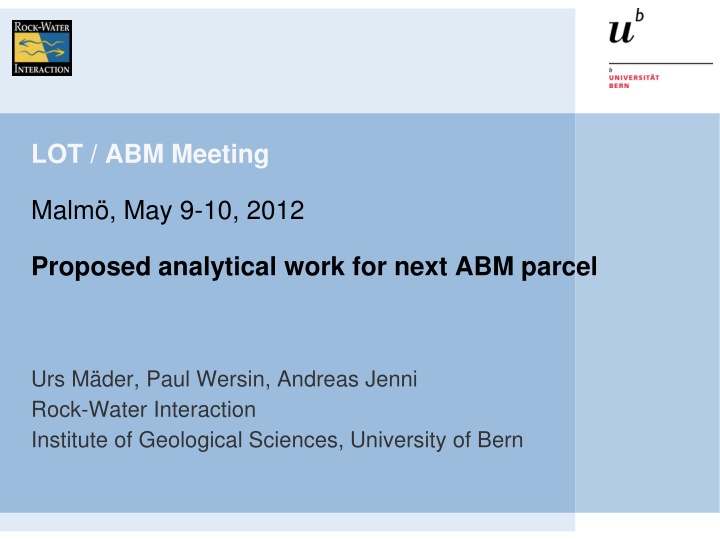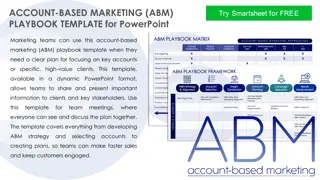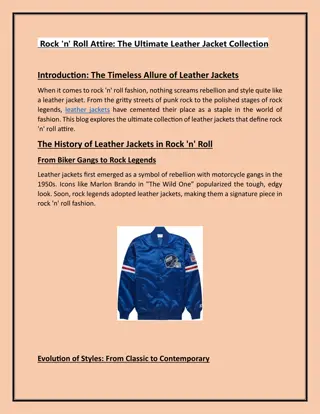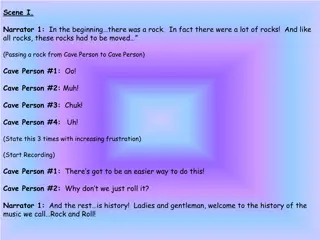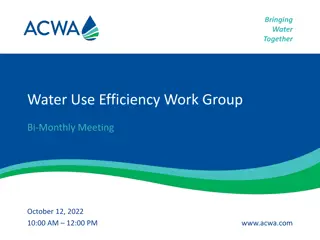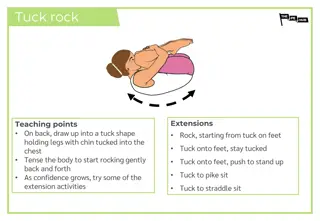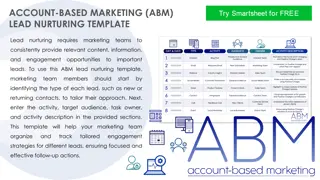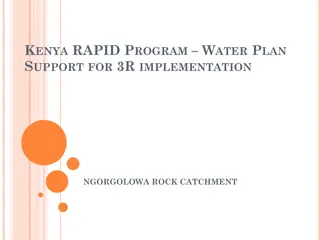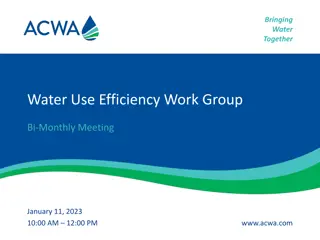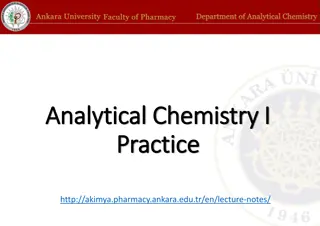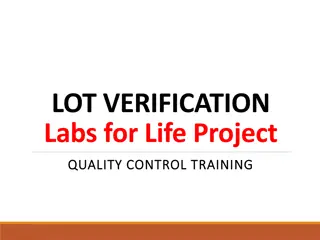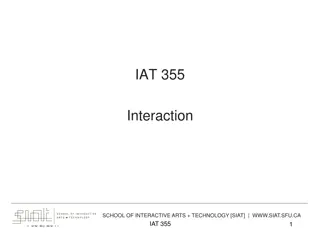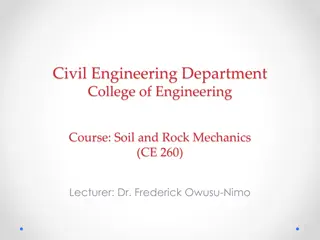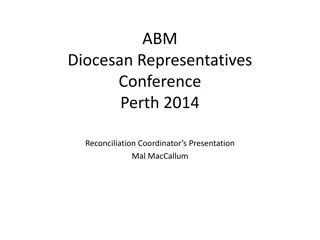Analytical Work for Rock-Water Interaction at LOT/ABM Meeting
Proposed analytical work for the next ABM parcel focuses on trace minerals, soluble salts, and dissolved organic acids in the context of rock-water interactions. The investigation includes qualitative measurements, new separation techniques, and analysis of iron-bentonite interactions. The aim is to understand the rapid redistribution of trace mineral components and their impact on pore water composition. Long-term effects and experimental artifacts are also considered for a comprehensive study.
Download Presentation

Please find below an Image/Link to download the presentation.
The content on the website is provided AS IS for your information and personal use only. It may not be sold, licensed, or shared on other websites without obtaining consent from the author.If you encounter any issues during the download, it is possible that the publisher has removed the file from their server.
You are allowed to download the files provided on this website for personal or commercial use, subject to the condition that they are used lawfully. All files are the property of their respective owners.
The content on the website is provided AS IS for your information and personal use only. It may not be sold, licensed, or shared on other websites without obtaining consent from the author.
E N D
Presentation Transcript
LOT / ABM Meeting Malm , May 9-10, 2012 Proposed analytical work for next ABM parcel Urs M der, Paul Wersin, Andreas Jenni Rock-Water Interaction Institute of Geological Sciences, University of Bern
Proposed work for new ABM parcel Trace minerals Focus on soluble salts (sulphates, carbonates) Clay context: WC, Xi(minimize sample mass) Dissolved organic acids Performed qualitative measurements with IC. New separation columns: attempt to quantify LMWOA in aqueous extracts (possibly in combination with core infiltration experiments). Iron-bentonite interaction Analysis of interaction zone (SEM, XRD, XRF, XAS ) Collaboration with other labs (ABM and others)
Trace mineral components Trace mineral components control pore water composition and exchanger composition (Ca-sulfate, silica, calcite, dolomite, pyrite, solid organic material). Some trace components react rapidly relative to experimental timescales or even times for analytical procedures. LOT experience shows that re-distribution of trace minerals may be efficient and relatively rapid (Ca-sulfate). cristobalite/amorphous The distribution components conjunction with mass transfer processes observed in the ABM experiment. and re-distribution therefore of be trace investigated mineral should also in
Dissolve organic acids in MX-80 pore water F O1 Cl O2 system O3 MX-80 core infiltration experiment (LOT core); Metrosep ASUPP1_250 Standards on upper horizontal axis; bentonite samples #10-#15 Decreasing oa concentration from #10 to #15;
Why look at Fe-bentonite interaction? Fe(0) + 2H2O Fe2+ + H2 + 2OH- Mont. dissolution Prec. of corrosion products Fe-clay interactions Fe3O4, GR, FeCO3, FeS >Fe(II)-clay, Fe-smectite, berthierine .
A lot has already been done ... Destabilisation of structure by Fe(III) reduction (Lantenois et al. 2005) > Transformation to berthierine / chlorite at higher T (Cathelineau et al..) > Dissolution via corrosion induced pH increase (Kumpulainen et al. 2010) > Reaction of hydrogen with Fe(III) in clay (Didier et al. 2012) > but process details are still not understood.
What about long-term? Experimental artefacts from O2 ingress > Transient effects may mask slow, long-term processes > Long-term simulations based on simplistic models > Birgersson & Wersin 2011
Fe-bentonite in ABM (1) Possibility to study longer term processes at realistic accelerated conditions > Valuabe experience gained from prev. field studies should allow adequate sampling/storage and analysis > Study interaction skin zone: SEM, -XRD, -XRF, XAS... >
Fe-bentonite in ABM (2) Different clay materials: interlayer cation, Fe content, accessories > Supported by modelling > Possibility to design new test with iron avoid galvanic bridging to study corrosion (ABM-2) > Last bu not least: ABM team qualified to do the job >
